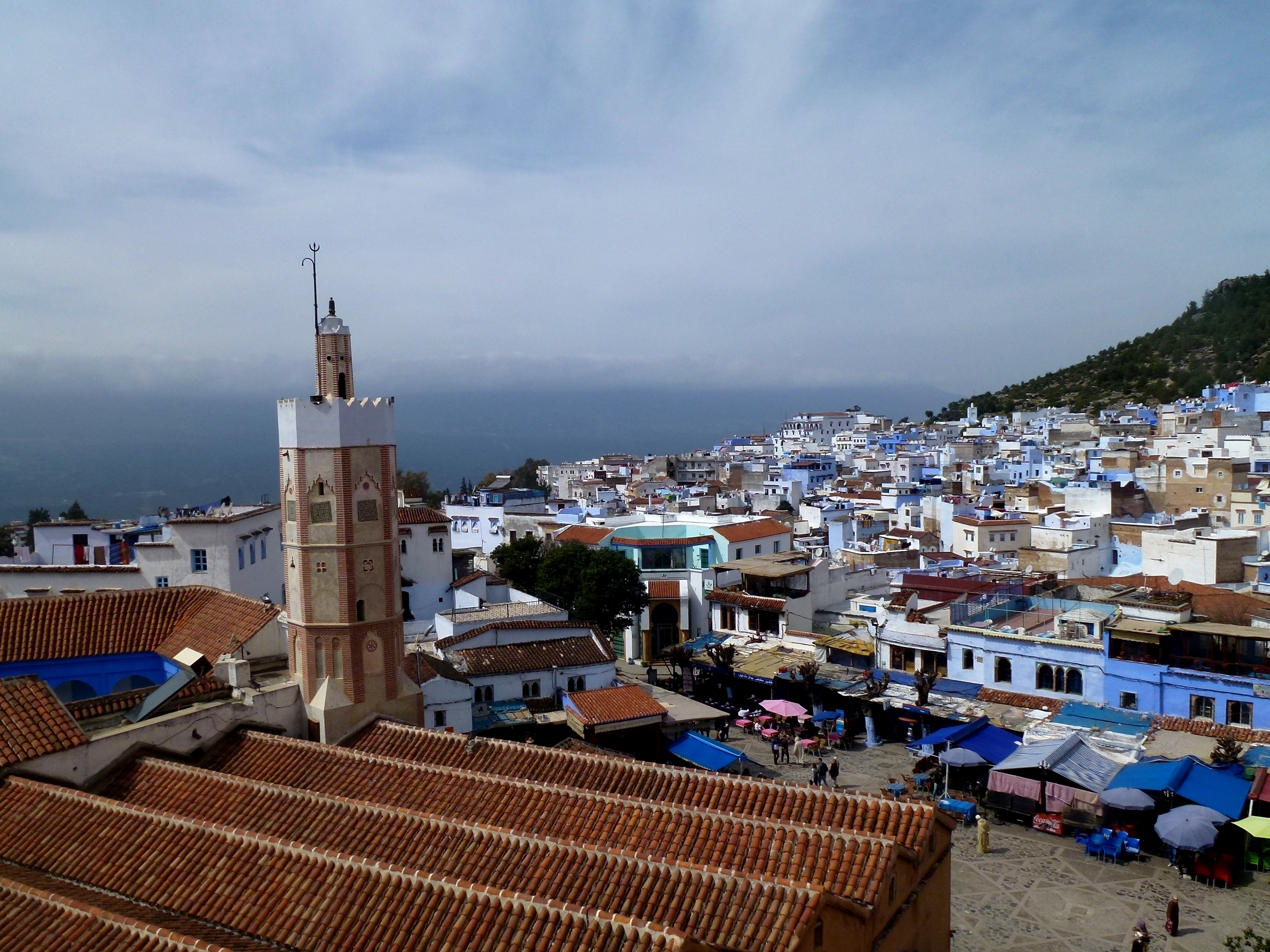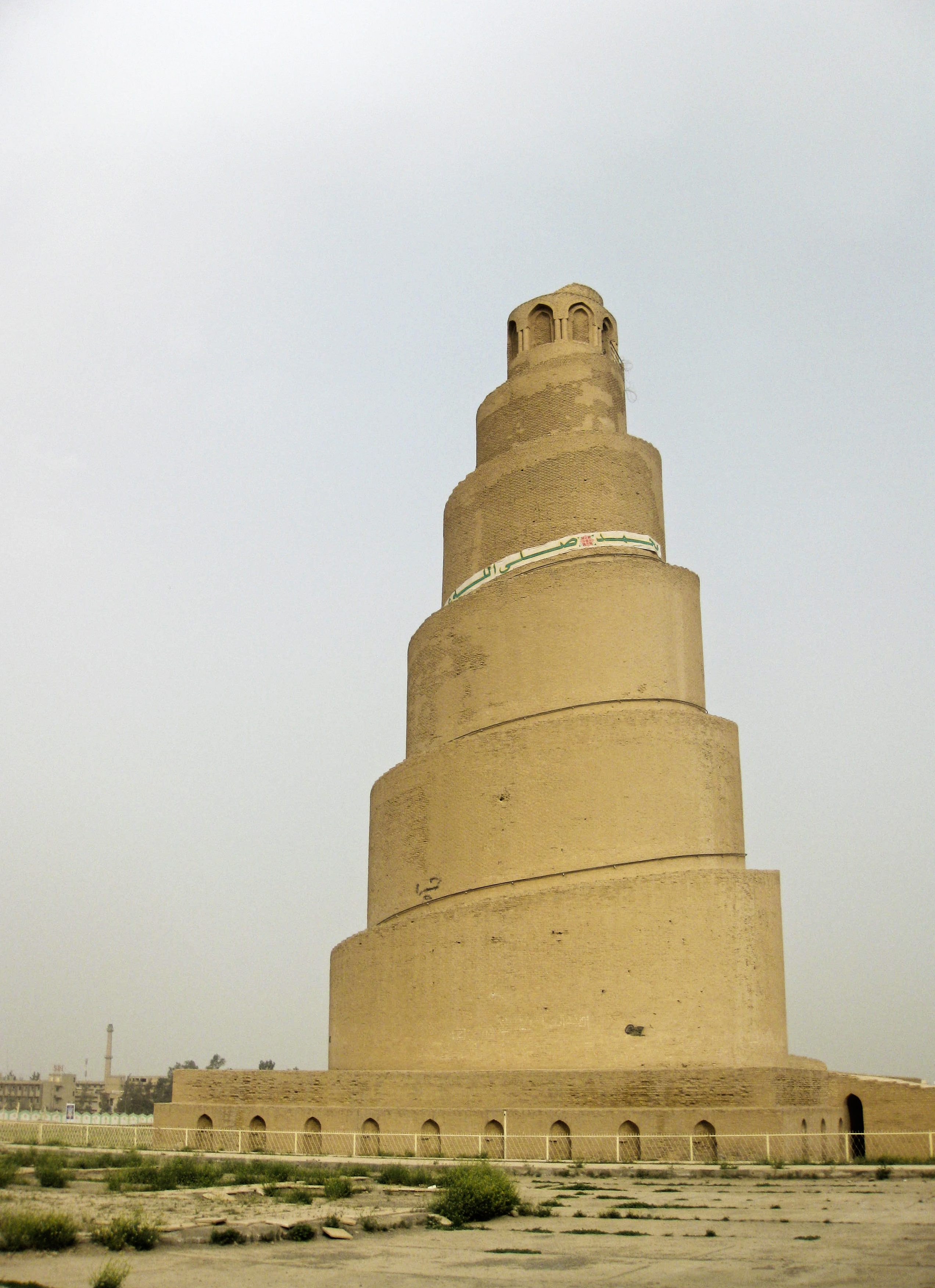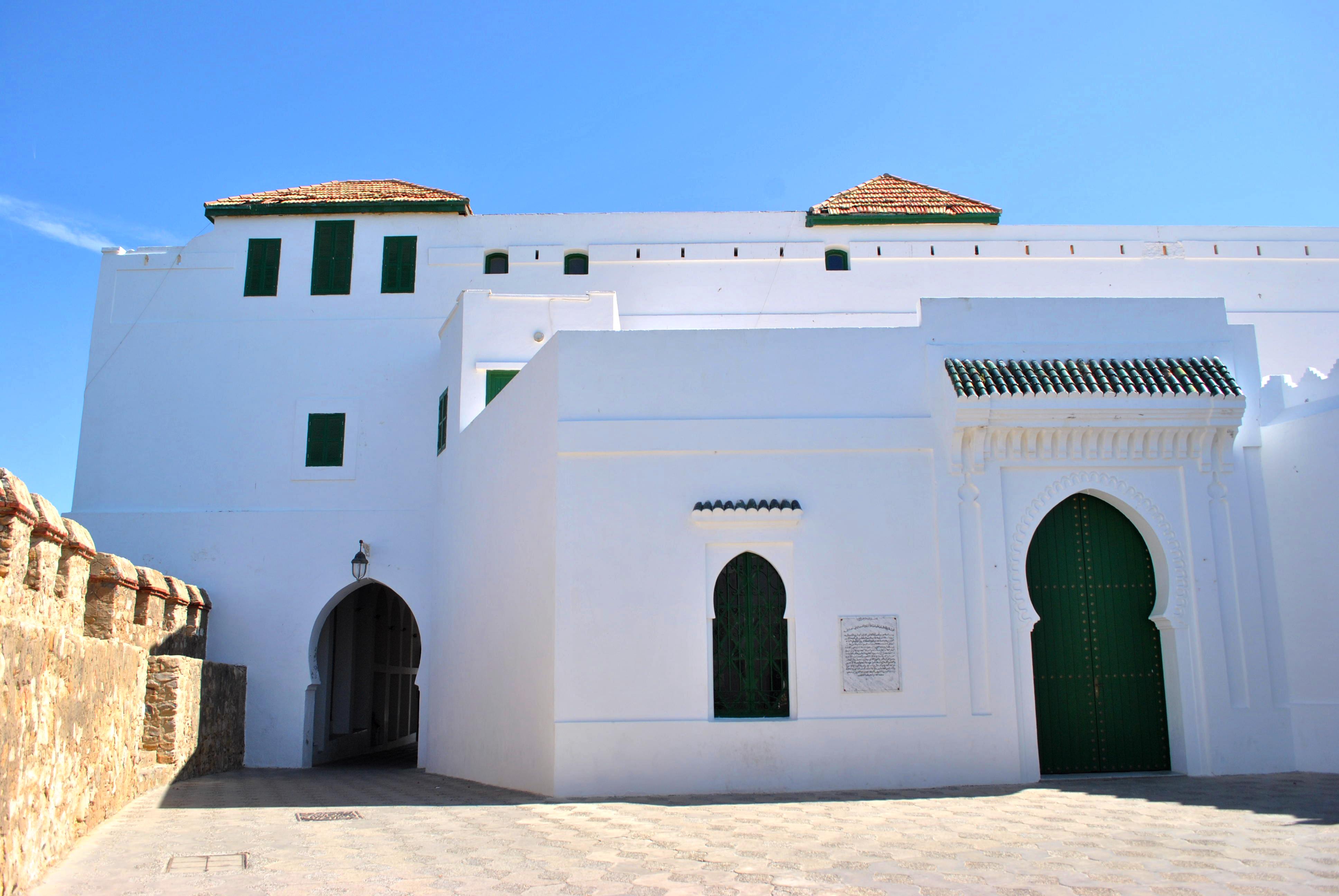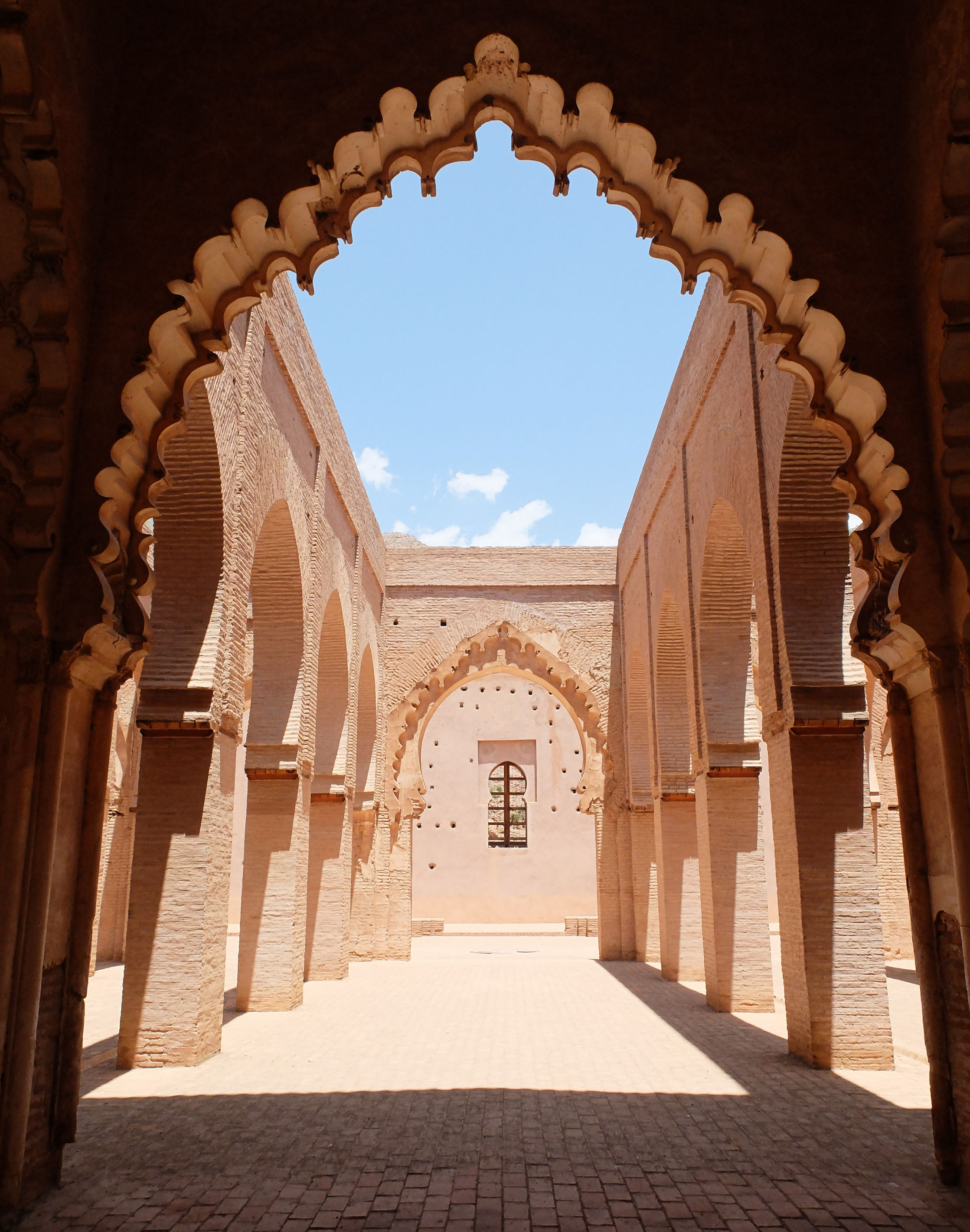|
Great Mosque Of Chefchaouen
The Grand Mosque of Chefchaouen (; or الجامع الكبير ''al-jama ʿal-kabir'' or الجامع الأكبر ''al-jamaʿ al-ʾakbar'') is the oldest mosque and the main historic Friday mosque of Chefchaouen, Morocco. It is located at the central ''Place Outa Hammam'', near the city's historic kasbah. History The mosque dates from the earliest period of the city after its foundation by Moulay 'Ali ibn Rashid al-Alami, but sources vary (or contradict each other) in citing the exact date of its foundation: some date it to 1471 (the date of the city's foundation), another cites 1475-76 (880 AH), and others date it to the 16th century, particularly under Moulay 'Ali's son Mohammed. Its minaret is believed to date from the late 17th century due to its octagonal shaft and overall similarity to the style of minarets built under Ali ibn Abdallah Errifi (the governor of Tangier under Sultan Moulay Isma'il) such as those of the Kasbah Mosque of Tangier or the Great Mosque of A ... [...More Info...] [...Related Items...] OR: [Wikipedia] [Google] [Baidu] |
Minaret
A minaret is a type of tower typically built into or adjacent to mosques. Minarets are generally used to project the Muslim call to prayer (''adhan'') from a muezzin, but they also served as landmarks and symbols of Islam's presence. They can have a variety of forms, from thick, squat towers to soaring, pencil-thin spires. Etymology Two Arabic words are used to denote the minaret tower: ''manāra'' and ''manār''. The English word "minaret" originates from the former, via the Turkish language, Turkish version (). The Arabic word ''manāra'' (plural: ''manārāt'') originally meant a "lamp stand", a cognate of Hebrew language, Hebrew ''Temple menorah, menorah''. It is assumed to be a derivation of an older Linguistic reconstruction, reconstructed form, ''manwara''. The other word, ''manār'' (plural: ''manā'ir'' or ''manāyir''), means "a place of light". Both words derive from the Arabic root ''n-w-r'', which has a meaning related to "light". Both words also had other meani ... [...More Info...] [...Related Items...] OR: [Wikipedia] [Google] [Baidu] |
Asilah
Asilah () is a fortified town on the northwest tip of the Atlantic coast of Morocco, about south of Tangier. Its ramparts and gateworks remain fully intact. History The town's history dates back to 1500 B.C., when Phoenicians occupied a site called Silis, Zili, Zilis, or Zilil (, , or , ) which is being excavated at Dchar Jdid, some NE of present Asilah; that place was once considered to be the Roman stronghold Ad Mercuri, but is now accepted to be Zilil. The town of Asilah itself was originally constructed by the shia Idrisid dynasty, and Umayyad caliph Al-Hakam II rebuilt the town in 966. The Portuguese conquered the city in 1471 and built its fortifications, but it was abandoned because of an economic debt crisis in 1549. In 1578, Sebastian of Portugal used Asilah as a base for his troops during a planned crusade that resulted in Sebastian's death, which in turn caused the Portuguese succession crisis of 1580. The Portuguese kept hold of the town but in 1589 the Saa ... [...More Info...] [...Related Items...] OR: [Wikipedia] [Google] [Baidu] |
List Of Mosques In Morocco
This is a list of mosques in Morocco. According to the Ministry of Awqaf and Islamic Affairs in 2016, there are around 41,755 mosques in Morocco, of which 16,489 are Jama Masjids, and 10,061 are specifically designated as culturally significant. ''Mawdoo3''. Retrieved January 12, 2018. See also * Islam in Morocco * List of mosques in AfricaReferences {{DEFAULTSORT:Mosques in Morocco |
Whitewash
Whitewash, calcimine, kalsomine, calsomine, asbestis or lime paint is a type of paint made from slaked lime ( calcium hydroxide, Ca(OH)2) or chalk (calcium carbonate, CaCO3), sometimes known as "whiting". Various other additives are sometimes used. Use as paint Whitewash cures through a reaction with carbon dioxide in the atmosphere to form calcium carbonate in the form of calcite, a type of reaction generally known as carbonation or by the more specific term, carbonatation. It is usually applied to exteriors, or interiors of rural dairies because of its mildly antibacterial properties. Whitewash can be tinted for decorative use and is sometimes painted inside structures such as the hallways of apartment buildings. A small amount can rub off onto clothing. In Britain and Ireland, whitewash was used historically in interiors and exteriors of workers' cottages and still retains something of this association with rural poverty. In the United States, a similar attitude is exp ... [...More Info...] [...Related Items...] OR: [Wikipedia] [Google] [Baidu] |
Zellij
Zellij (), also spelled zillij or zellige, is a style of mosaic tilework made from individually hand-chiseled tile pieces. The pieces were typically of different colours and fitted together to form various patterns on the basis of tessellations, most notably elaborate Islamic geometric motifs such as radiating star patterns composed of various polygons. This form of Islamic art is one of the main characteristics of Moorish architecture, architecture in the western Islamic world. It is found in the architecture of Morocco, the architecture of Algeria, early Islamic Architecture of Tunisia, sites in Tunisia, and in the historic monuments of al-Andalus (in the Iberian Peninsula). From the 14th century onwards, ''zellij'' became a standard decorative element along lower walls, in fountains and pools, on minarets, and for the paving of floors. After the 15th century the traditional mosaic ''zellij'' fell out of fashion in most countries except for Morocco, where it continues to be prod ... [...More Info...] [...Related Items...] OR: [Wikipedia] [Google] [Baidu] |
Lambrequin Arch
The lambrequin arch, is a type of arch with an ornate profile of lobes and points. It is especially characteristic of Moorish architecture in North Africa and present-day Spain. The ''muqarnas'' arch, whose intrados (inner surfaces) are made up of ''muqarnas'' (or stalactite) sculpting, also resembles the profile of the lambrequin arch and is related to it in form and perhaps in origin. Origins and development This type of arch was introduced into the Maghreb and al-Andalus regions during the Almoravid period (11th–12th centuries), with an early appearance in the funerary section of the Qarawiyyin Mosque (in Fez) dating from the early 12th century. Examples are of this form are also found in the Almoravid-era decoration of the Great Mosque of Tlemcen (founded in 1082, redecorated in 1136). Its use is particularly characteristic of the Maghreb and it grew in importance during the following Almohad period. At least two different origins have been suggested for the lambrequin ... [...More Info...] [...Related Items...] OR: [Wikipedia] [Google] [Baidu] |
Multifoil Arch
A multifoil arch (or polyfoil arch), also known as a cusped arch, polylobed arch, or scalloped arch, is an arch characterized by multiple circular arcs or leaf shapes (called foils, lobes, or cusps) that are cut into its interior profile or intrados. The term ''foil'' comes from the old French word for "leaf." A specific number of foils is indicated by a prefix: trefoil (three), quatrefoil (four), cinquefoil (five), sexfoil (six), octofoil (eight). The term multifoil or scalloped is specifically used for arches with more than five foils. The multifoil arch is characteristic of Islamic art and architecture; particularly in the Moorish architecture of al-Andalus (Iberian Peninsula) and North Africa and in Mughal architecture of the Indian subcontinent. Variants of the multifoil arch, such as the trefoil arch, are also common in other architectural traditions such as Gothic architecture. Origins The first multifoil arches were developed by the Umayyads and can be found in a s ... [...More Info...] [...Related Items...] OR: [Wikipedia] [Google] [Baidu] |
Qibla
The qibla () is the direction towards the Kaaba in the Great Mosque of Mecca, Sacred Mosque in Mecca, which is used by Muslims in various religious contexts, particularly the direction of prayer for the salah. In Islam, the Kaaba is believed to be a sacred site built by prophets Abraham in Islam, Abraham and Ishmael in Islam, Ishmael, and that its use as the qibla was ordained by God in several verses of the Quran revealed to Muhammad in the second Islamic calendar, Hijri year. Prior to this revelation, Muhammad and his followers in Medina faced Jerusalem for prayers. Most mosques contain a (a wall niche) that indicates the direction of the qibla. The qibla is also the direction for entering the (sacred state for the hajj pilgrimage); the direction to which animals are turned during (Islamic slaughter); the recommended direction to make (supplications); the direction to avoid when relieving oneself or spitting; and the direction to which the deceased are aligned when Islamic ... [...More Info...] [...Related Items...] OR: [Wikipedia] [Google] [Baidu] |
Horseshoe Arch
The horseshoe arch (; ), also called the Moorish arch and the keyhole arch, is a type of arch in which the circular curve is continued below the horizontal line of its diameter, so that the opening at the bottom of the arch is narrower than the arch's full span. Evidence for the earliest uses of this form are found in Late antique, Late Antique and Sasanian architecture, and it was then used in Spain by the Visigoths. But in the 19th century, perhaps when these earlier uses had not been realized, it became emblematic of Islamic architecture, especially Moorish architecture and Mozarabic art in Iberia. It also made later appearances in Moorish Revival architecture, Moorish Revival and Art Nouveau styles. Horseshoe arches can take rounded, pointed or Multifoil arch, lobed form. History Origins and early uses The origins of the horseshoe arch are complicated. It appeared in pre-Islamic Sasanian architecture such as the Taq Kasra, Taq-i Kasra in present-day Iraq and the Palace ... [...More Info...] [...Related Items...] OR: [Wikipedia] [Google] [Baidu] |
Wudu
''Wuduʾ'' ( ) is the Islamic procedure for cleansing parts of the body, a type of ritual purification, or ablution. The steps of wudu are washing the hands, rinsing the mouth and nose, washing the face, then the forearms, then wiping the head, the ears, then washing or wiping the feet, while doing them in order without any big breaks between them. Wudu is an important part of ritual purity in Islam that is governed by fiqh, which specifies hygienical jurisprudence and defines the rituals that constitute it. Ritual purity is called ''tahara''. Wudu is typically performed before Salah or reading the Quran. Activities that invalidate wudu include urination, defecation, flatulence, deep sleep, light bleeding (depending on madhhab), menstruation, postpartum status, and sexual intercourse. Wudu is often translated as "''partial ablution"'', as opposed to ghusl, which translates to "''full ablution",'' where the whole body is washed. An alternative to wudu is tayammum or "''dry ... [...More Info...] [...Related Items...] OR: [Wikipedia] [Google] [Baidu] |
Sahn
A ''sahn'' (, '), is a courtyard in Islamic architecture, especially the formal courtyard of a mosque. Most traditional mosques have a large central ''sahn'', which is surrounded by a ''Riwaq (arcade), riwaq'' or arcade (architecture), arcade on all sides. Etymology The word ''sahn'' (صَحْن) means a courtyard in Arabic. But more commonly it means "plate", "dish". Form The courtyard (''sahn'') of a mosque normally precedes and gives access to the interior prayer hall that stands on the ''qibla'' side (the side corresponding to the direction of prayer). Most mosque courtyards contained a public fountain where Muslims performed ''wudu'', a ritual ablution (purification) Fard, required before Salah, prayer. The courtyard could be paved with stones or sometimes planted with trees. Historically, because of the warm Middle Eastern climate, the courtyard also served as overflow to accommodate the larger number of worshippers that came during Friday prayers. However, the hot climat ... [...More Info...] [...Related Items...] OR: [Wikipedia] [Google] [Baidu] |
List Of Rulers Of Morocco
This is a list of rulers of Morocco since 789. The common and formal titles of these rulers has varied, depending on the time period. Since 1957, the designation King has been used. The present King of Morocco is Mohammed VI of the Alawi dynasty, since 23 July 1999. Idrisid dynasty (788–974) Almoravid dynasty (1040–1147) Almohad dynasty (1121–1269) Marinid dynasty (1195–1465) Idrisid interlude (1465–1471) * Muhammad ibn Ali Idrisi-Joutey (1465–1471) Wattasid dynasty (1472–1554) Saadi dynasty (1544–1659) Dila'i interlude (1659–1663) * Muhammad al-Hajj ad-Dila'i (1659–1663) Alawi dynasty (1631–present) 1631–1957: Sultans of Morocco 1957–present: Kings of Morocco Timeline Royal standard File:Royal standard of Morocco.svg, Royal standard of Morocco See also * Succession to the Moroccan throne * History of Morocco * Politics of Morocco References {{DEFAULTSORT:List Of Rulers Of Morocco Rulers Rulers Rulers Morocc ... [...More Info...] [...Related Items...] OR: [Wikipedia] [Google] [Baidu] |








